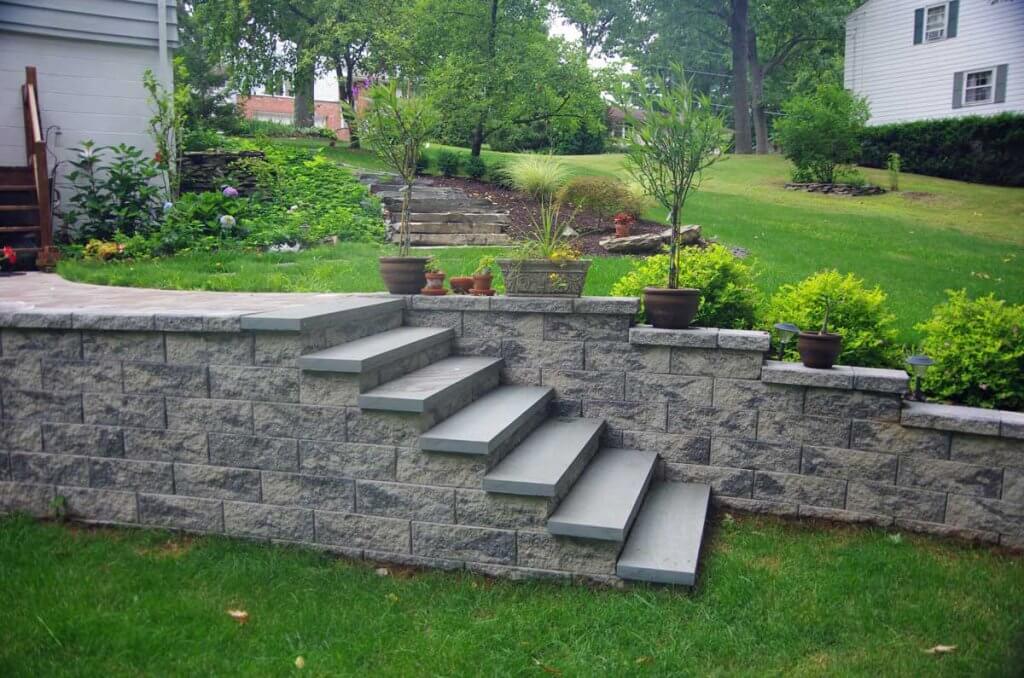
Trust their choices because most have learned over time exactly what materials and construction detailing provides you with the most attractive and functional retaining wall.There are over a dozen types of retaining walls and materials you can choose from - including things like railroad ties. These professionals know the challenges of creating retaining walls, particularly if structural engineering is required. Local climate and soils also have a big impact as will unique issues such as earthquake and local building codes. There are many techniques for achieving a particular look and feel of a wall. They know what brands of block are locally available, which will guide them in presenting your most cost-effective options.

Listen To ProfessionalsĮvery contractor or landscape architect will have their own preferences for the kind of wall they specify for your project. These units have made retaining walls significantly more affordable and more beautiful, particularly when coordinated with matching pavers. In short, they fit together accurately to increase overall strength and eliminate the need for a block core. Each manufacturer will offer their own shapes, surface textures and colors that come together in their own particular system of construction. These blocks do have cells, but they are not organized in the same way as the standard split face. Designed to provide a structural unit with a realistic stone-like face, the blocks are more irregular in size to provide a surface that is variable and more imitative of real stone. Retaining wall systems have revolutionized the look and the construction methods of today’s retaining walls. The only problem is it's a new product so you have to order large quantities from the factory, so it's not an option yet for small walls." Retaining Wall System Units You can combine these blocks with concrete and stucco for more variety in simple modern design. I like those by Basalite because I can specify different finishes to get the exact look I'm after. This is popular with midcentury architecture. "This is regular block with a smooth, almost polished face that gives a clean, granite-like look. "We're excited about ground faced block," says California landscape architect, Joseph Heuttl. The strong interest in modern design has brought this kind of block back into style with certain differences. Another version, the slump block provided a surface shape and texture that resembled adobe brick, and this became popular for Spanish style architecture. This block also offered a range of colors beyond the typical grey concrete, again to lower cost and simplify retaining wall construction. Some featured score lines carved into the split face. The original split face was broken to look like rough stone. This allows the block to be used both as a decorative and a structural unit, eliminating the additional expense of applying veneers. This is a standard concrete block that is manufactured with an attractive texture on one side. Block provides outstanding structural reinforcement often required by architects and structural engineers for walls over about four feet in height. Therefore they are usually covered with an attractive veneer of stone, brick or decorative masonry units. Retaining walls made of standard block can stand alone, but they offer little aesthetic value. There can also be slots formed into the block that allow rebar to run horizontally in the wall as well. Standard reinforcing bar, "rebar" is integrated into the cells to unify the wall vertically as well as extending into the foundation. The cells are vital to its stability and should be filled with concrete or "grouted solid" when the wall is complete. This block measures 8" x 8" x 16" and features two identical openings or cells. Three basic types of block used for raised planters and retaining wall structures: Standard Concrete Block (CMU) Over the years block has evolved from the simple two cell rectangular unit often called "cinder block" to much more elaborate and attractive split face. Widely available and easy to work with, these concrete masonry units provide both aesthetic value and powerful structural integrity.


These walls are constructed of units that fit together accurately to increase overall strength and eliminate the need for a block core.Ĭoncrete block has always been the most important component in retaining walls. Interlocking Retaining Wall Systems (PDF)


 0 kommentar(er)
0 kommentar(er)
